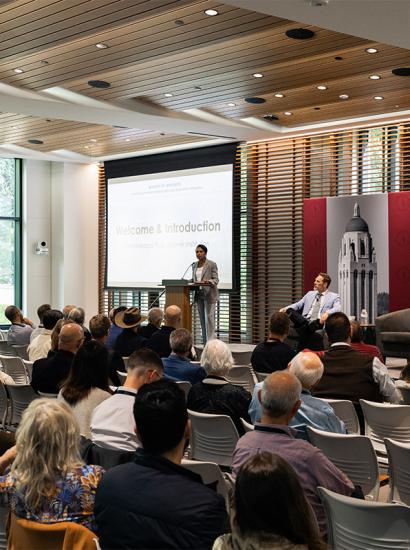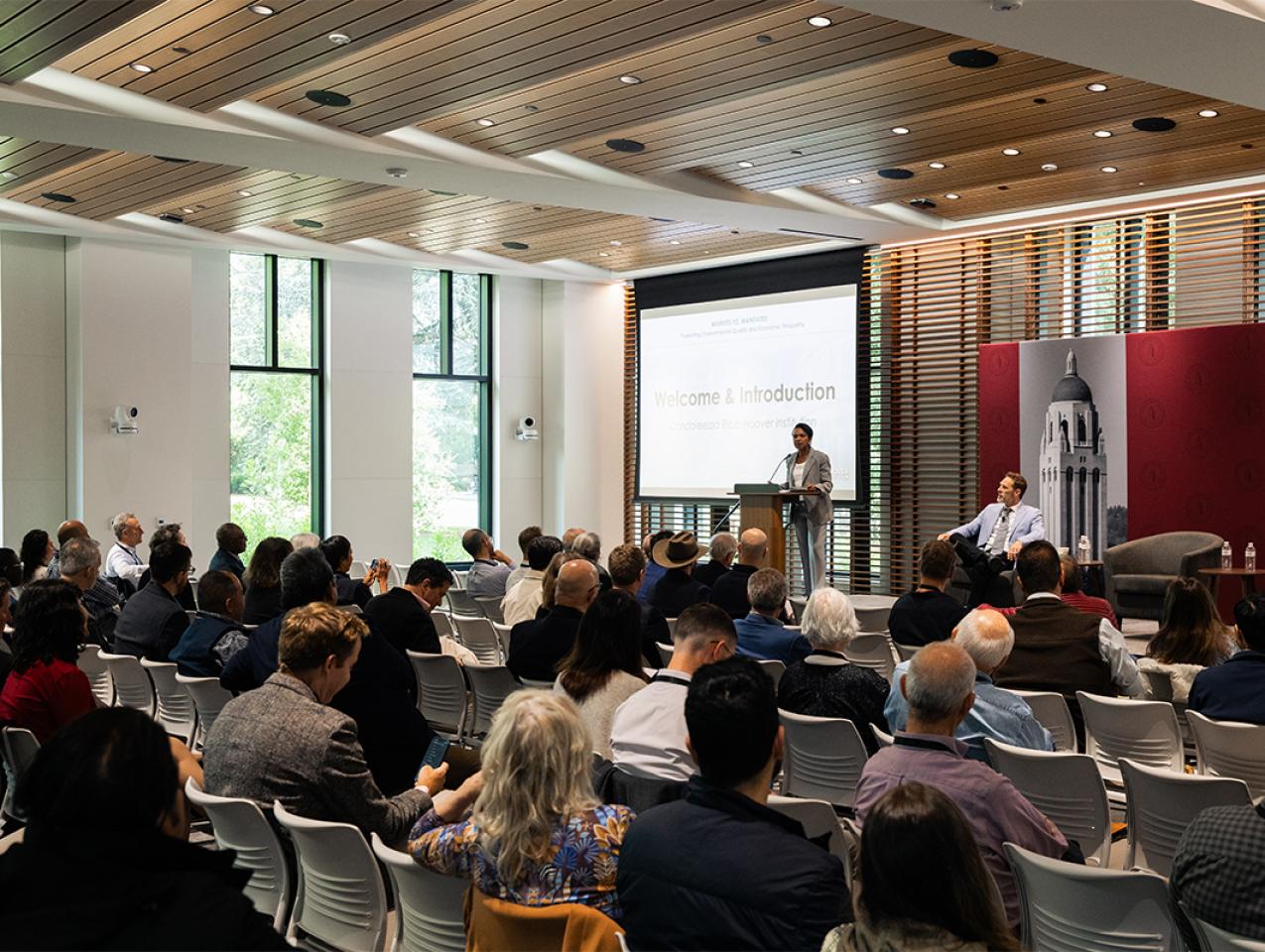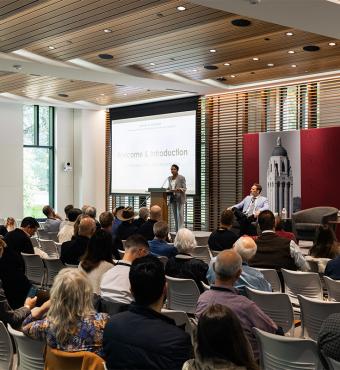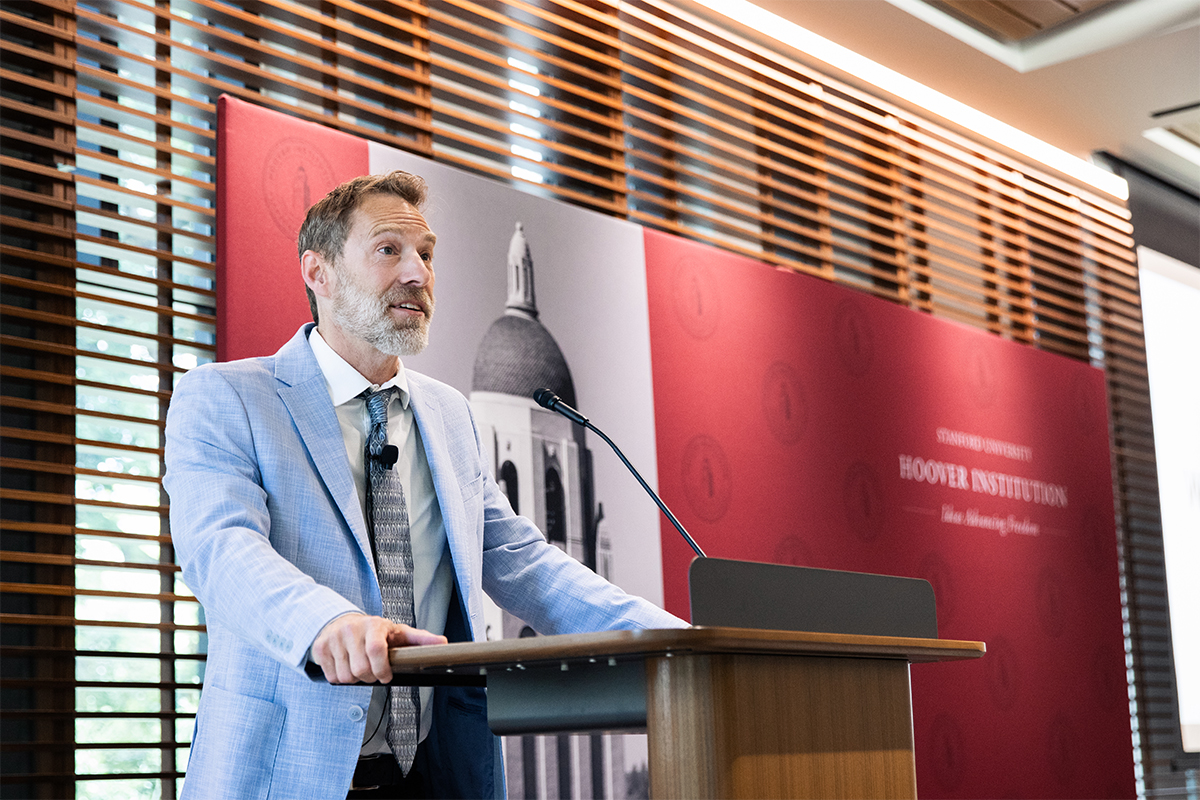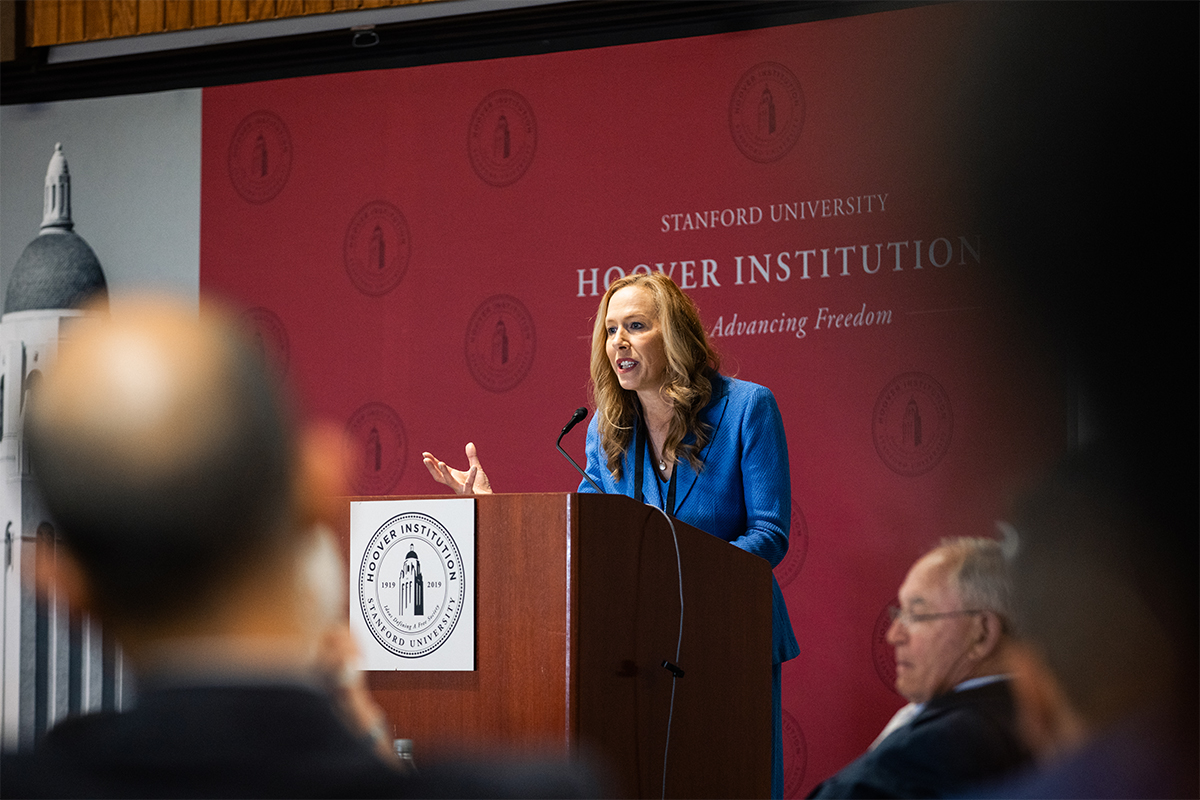Hoover Institution (Stanford, CA)—Experts on energy and environmental policy, journalists, advocates, and Native American tribal leaders gathered at the Hoover Institution on May 13 to consider how environmental policies based more on markets than mandates can drive natural resource conservation and responsible economic growth.
Attendees heard various views on how to pivot away from carbon-emitting energy sources, how markets can be unleashed to preserve the natural realm, as well as arguments that Uncle Sam needs to do a better job generating economic returns from its vast portfolio of federal lands.
The Markets vs. Mandates research program at Hoover is directed by Senior Fellows Terry L. Anderson and Dominic Parker.
Parker said the purpose of the conference was to explore if, when, and how “markets can offer more effective alternatives to the old environmentalist playbook of ‘mandate, regulate, and litigate’.”
Markets, Mandates and the Energy Transition
In a nuanced discussion on energy transitions, three self-described “energy geeks”—Senior Fellow Steven E. Koonin, energy geologist Scott Tinker, and Brookings Institution Fellow Samantha Gross—explored the complex interplay between markets and mandates in solving energy challenges.
Gross advocated for balanced energy systems that prioritize affordability, security, and sustainability over singular climate focus. She emphasized that energy transitions must “provide what people need while being good for them and the planet.” She further emphasized that developing economies should maintain affordable access to fossil fuels, while being given the flexibility to pursue energy transitions on a longer timeline.
Tinker argued that successful energy transitions historically occur only when better alternatives emerge—citing how economies moved from biomass to coal to oil, based on energy density and efficiency. “What we transition into needs to be better,” he emphasized, “more affordable and reliable.” He warned against “shell game” policies that merely export emissions overseas.
Both experts highlighted the disparity between wealthy and developing nations, with 1.3 billion people consuming approximately 50 megawatt hours annually while seven billion others use as little as 5 megawatt hours. Gross noted it’s “impossible to develop an industrial economy on solar panels” at our current technology level.
They criticized energy mandates for limiting options when flexibility is needed, with Gross advocating for reducing emissions “where you can most afford it” and lamenting the policy instability concerning future fossil fuel regulation versus the green energy transition, which prevents industry planning. Tinker warned that US shale production will likely peak by 2026, potentially shifting power to other major energy producers worldwide.
Koonin concluded that as energy transition challenges have become increasingly apparent, “policymakers and regulators are afraid to speak up.”
He added that predictions of the weather and other impacts of climate change have become more politically motivated than focused on the hard science.
Where Markets Work to Preserve Natural Resources: Wetland Credits in Florida
Will Rafey of UCLA presented compelling research on environmental offset markets, focusing on Florida’s wetland mitigation banking system operating between 1995 and 2018. These types of market mechanisms allow developers to purchase wetland credits from conservation projects as compensation for wetland development elsewhere.
“Environmental offsets involve new technologies that substitute for traditional methods of abatement or conservation,” Rafey explained, emphasizing the cost savings while preserving environmental quality.
His research examines large conservation projects in Florida’s wetlands that generate offset credits—often valued between $100,000 to $150,000 each—purchased by developers to comply with regulations, preventing substantial degradation of water resources.
Using satellite imagery covering 30 different wetland markets in Florida, Rafey tracked patterns of wetland development and conservation. His findings revealed that wetland development typically occurs in or adjacent to already developed areas, while conservation through wetland banks happens in peripheral regions.
The economic impact has been substantial: between 1995 and 2018, these markets facilitated $1.1 billion in credit trades, generating $1.7 billion in consumer surplus through $2.8 billion in total value of development. Additionally, restoration of wetland banks created a producer surplus of $730 million, expanding or holding steady the number of wetlands preserved in Florida.
Native American Leaders Seek Market Solutions Over Mandates
Another discussion featured three Native American leaders discussing energy development and extraction on tribal lands. C. J. Stewart from the Crow Nation described their 200-year relationship with the federal government but lamented how bureaucracy limits the tribe’s ability to export coal resources.
“Mandates are limitations, they don’t provide options,” Stewart emphasized.
He said the Biden administration’s desire to drastically raise the price of each ton of coal through a carbon price mechanism made it too costly for the Crow Nation to continue extracting coal. This dispute significantly impacted the Crow’s ability to fund programs and services for its own people.
Daniel Cardenas, representing the Pit River Tribe and the National Tribal Energy Association, addressed proposed federal funding cuts to tribal programs, suggesting these might force tribes to reconsider their dependence on federal government support. “The worse off you are, the better the grants are—the feds don’t fund success,” Cardenas observed.
He stressed that the 574 federally recognized tribes each need to make their own decisions about their future relationship with the federal government.
Richard Luarkie of the Laguna Pueblo of New Mexico and the Colorado School of Mines said resource extraction and the revenues they provide Indian tribes are vital to enabling greater exercise of sovereignty.
“We need a transition from being sovereign to be significant,” Luarkie argued. “Significance demonstrates our ability to execute, because as they say, you’re only as sovereign as you can afford to be. Energy and resources will transition us to that significance.”
Climate Adaptation and Disaster Risk
The forum also addressed climate adaptation and resilience with presentations from Margaret Walls of Resources for the Future and Judson Boomhower of UC San Diego.
Walls presented data showing damage from extreme weather events concentrated along the Gulf Coast and in vulnerable counties like Harris and Galveston in Texas as well as Butte County in California. She framed disaster risk as the product of hazard, exposure, and vulnerability, questioning why people continue moving to high-risk areas.
They discussed a policy that corrected distortions in federal aid assistance and succeeded in generating economic benefits. The Coastal Barrier Resources Act requires that anyone who builds a home or business on 3.8 million acres of high flood risk land agrees that they will not receive disaster aid, infrastructure money, and access to flood insurance from the US government.
As a result, this system saves the national flood insurance program $930 million, and benefits neighboring lands just outside the system’s boundaries in the form of greater development and in turn higher property tax revenues.
WSJ’s Strassel Urges Trump Administration to Unleash Value of Federal Lands
Wall Street Journal columnist Kim Strassel spoke to attendees about the urgent need to generate more revenue for the federal budget from lands controlled by the National Park Service, US Forest Service, and Bureau of Land Management. Together in 2023, those three agencies lost nearly $14 billion.
One option she suggested was to raise prices to enter federal lands, as there appears to be ample demand from the public to visit many parks. She said federal agencies should permit a broader range of activities within those lands, as many people in her native Alaska now opt to visit state parks instead of federal lands because they are allowed to camp, fish, and use recreational vehicles in those areas.
Bringing Market Forces to Federal Lands: Terry Anderson
Anderson noted the value of federal lands in his talk, and that the current moment presents an opportunity to change how government manages natural resources by embracing market mechanisms that provide better environmental outcomes at lower costs while respecting property rights and local decision-making.
He showed that simply raising the cost of entry to most federal lands to $9 or $10 per visit, combined with some mild cost cutting to operations of the National Park Service, US Forest Service, and Bureau of Land Management, could reduce the expense to the federal government of caring for those lands by more than $10 billion per year.
Guiding Principles
Dominic Parker concluded the conference by distilling a set of principles for environmental policy that were emphasized across all panel discussions. Prominent among these was the need for transparency so that “chips are on the table,” that is, participants of markets or mandates face the costs and reap the benefits resulting from tradeoffs found in all environmental decisions, whether markets or mandates.
All panelists highlighted the importance of flexibility in policy approaches so that environmental goals, rather than specific pathways, are emphasized. And most voiced a preference for state and local governance in settings where environment policy calls for mandates, rather than deferring to federal bureaucrats and politicians who have less information about local costs and benefits and weaker incentives to set policy reflecting local conditions.









